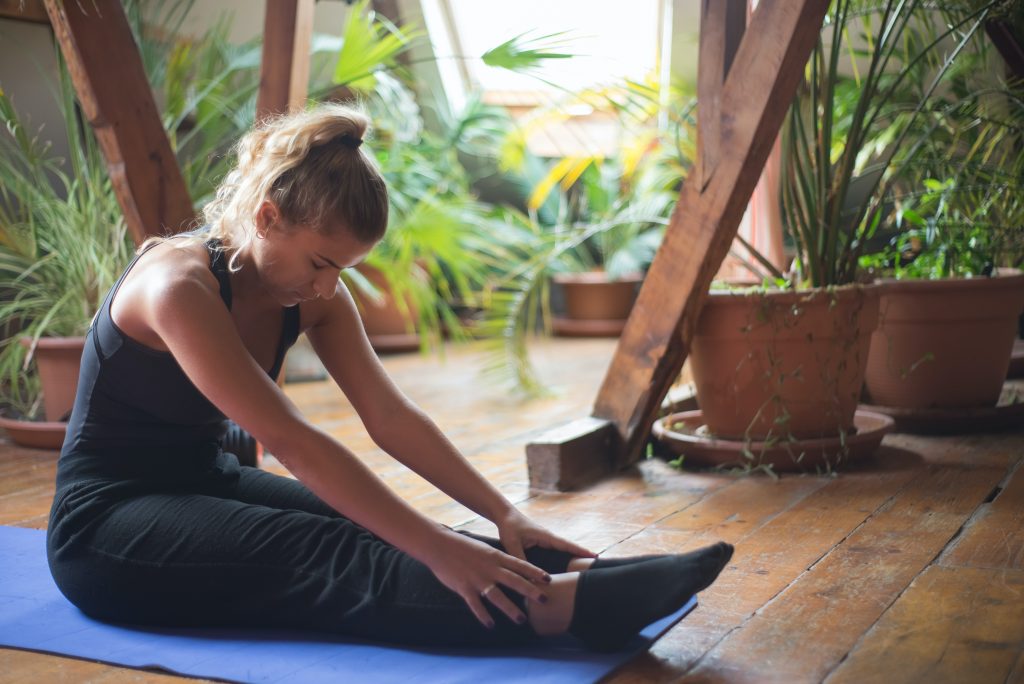Discover the ideal frequency for practicing yoga or Pilates to alleviate back pain.
How Often Should You Practice Yoga or Pilates to Help with Back Pain?

Living with back pain can be a real pain in the, well, back! But fear not, because there are ways to alleviate that discomfort and get you back on your feet. Two popular methods that can help with back pain are yoga and Pilates. Now, you may be asking yourself, “How often should I practice these activities to see real results?” Well, my friend, you’ve come to the right place! In this article, we’ll explore the world of back pain, the benefits of yoga and Pilates, and find out which one is more effective. So, grab your yoga mat or Pilates ball, and let’s dive in!
Understanding Back Pain: Causes and Symptoms
Before we start talking about yoga and Pilates, let’s take a moment to understand what causes back pain and how it manifests itself. Back pain can be a result of various factors, such as poor posture, muscle strain, or even underlying medical conditions. The symptoms can range from a dull ache to sharp, shooting pain that hampers your daily activities. It’s important to recognize these symptoms and seek appropriate treatment.
Back pain is a common ailment that affects people of all ages and lifestyles. It can be a temporary discomfort or a chronic condition that significantly impacts one’s quality of life. Understanding the anatomy of back pain and its common causes can help you navigate through the challenges of managing and treating this condition.
The Anatomy of Back Pain
Back pain can occur in different areas of your back, and it can also radiate to other parts of your body. The three main sections of the back where pain commonly occurs are the upper back (thoracic), middle back (lumbar), and lower back (sacral area). Each section has its unique set of structures, including bones, muscles, ligaments, and nerves, which can contribute to the development of pain.
Identifying the location of your pain can help you and your healthcare provider determine the appropriate treatment methods. For example, upper back pain may be associated with poor posture or muscle tension, while lower back pain can be caused by issues with the spine, such as herniated discs or spinal stenosis.
Common Causes of Back Pain
Back pain can be triggered by a myriad of causes. Some common culprits include muscle strains, herniated discs, arthritis, osteoporosis, and even stress. Yes, stress can be a real pain in the back too! It’s crucial to identify the root cause of your pain to find the most effective solution.
One of the leading causes of back pain is poor posture. Spending long hours sitting or standing in an improper position can strain the muscles and ligaments in your back, leading to discomfort and pain. Additionally, engaging in activities that involve heavy lifting or repetitive movements can put excessive stress on your back, increasing the risk of injury and pain.
Another common cause of back pain is age-related degeneration. As we get older, the discs in our spine may start to deteriorate, leading to conditions like herniated discs or spinal stenosis. Arthritis, a condition characterized by inflammation of the joints, can also affect the spine and contribute to back pain.
Recognizing Symptoms of Back Pain
Spotting the symptoms of back pain early on can make a significant difference in your recovery journey. These symptoms may include stiffness, muscle spasms, difficulty moving, and in severe cases, numbness or tingling sensations. It’s important to note that the severity and duration of symptoms can vary depending on the underlying cause of the pain.
For instance, if your back pain is caused by muscle strain, you may experience localized discomfort and tenderness. On the other hand, if a herniated disc is the culprit, you may feel pain radiating down your leg, a condition known as sciatica. Understanding the specific symptoms you are experiencing can help your healthcare provider make an accurate diagnosis and develop an appropriate treatment plan.
In conclusion, back pain is a complex condition that can have various causes and symptoms. It is essential to pay attention to your body and seek medical advice if you experience any persistent or severe pain. By understanding the anatomy of back pain, its common causes, and recognizing the symptoms, you can take proactive steps towards managing and treating this prevalent condition.
The Role of Yoga in Alleviating Back Pain
Yoga, a practice that combines physical postures, breathing exercises, and meditation, has been used for centuries to promote physical and mental well-being. It is a holistic approach that addresses not only the physical symptoms but also the underlying causes of back pain. When it comes to back pain, yoga can be a game-changer! Here’s how:
Yoga promotes flexibility, strength, and balance – all essential elements in maintaining a healthy back. The gentle stretches and movements in yoga poses help alleviate muscle tension, improve spinal alignment, and increase blood circulation to the affected areas. By engaging in regular yoga practice, you can gradually improve your range of motion and reduce the risk of future back pain episodes.
But yoga is not just about the physical aspect. It also promotes relaxation, reducing stress levels that can aggravate back pain. Through deep breathing and mindful meditation, yoga helps calm the mind and release tension stored in the body. This mind-body connection is crucial in managing chronic back pain and fostering overall well-being.
How Yoga Helps with Back Pain
Yoga is a versatile practice that offers various benefits for individuals struggling with back pain. Here are some ways yoga can help:
- Improved Posture: Many back pain issues stem from poor posture. Yoga poses, such as Mountain Pose and Tree Pose, focus on aligning the spine and strengthening the core muscles, which are vital for maintaining good posture.
- Increased Core Strength: A strong core provides stability and support to the spine. Yoga poses like Plank Pose and Boat Pose target the abdominal muscles, helping to build core strength and reduce the strain on the back.
- Enhanced Flexibility: Tight muscles can contribute to back pain. Yoga poses, such as Forward Fold and Seated Forward Bend, gently stretch the muscles of the back, hips, and hamstrings, promoting flexibility and relieving tension.
- Stress Reduction: Stress and anxiety can exacerbate back pain. Yoga incorporates relaxation techniques, such as Savasana (Corpse Pose) and guided meditation, to calm the mind and reduce stress levels, ultimately alleviating back pain.
So, roll out your mat and strike a pose! With regular practice, you can experience the transformative benefits of yoga on your back pain.
Recommended Yoga Poses for Back Pain
Ready to give yoga a shot? Here are a few poses that can work wonders for your back pain:
- Child’s Pose: This gentle, resting pose stretches the lower back and can provide relief from discomfort. It allows the spine to elongate and relax, easing tension in the back muscles.
- Downward-Facing Dog: This pose strengthens the back muscles while stretching the entire spine. It also helps lengthen the hamstrings and calves, which can contribute to back pain if tight.
- Cat-Cow Pose: A dynamic pose that helps improve spinal flexibility and releases tension in the back. The alternating movement between arching and rounding the back gently massages the spine and promotes mobility.
- Bridge Pose: This pose strengthens the back muscles and opens up the chest, improving posture. It also stretches the hip flexors, which can become tight and contribute to back pain.
Remember to listen to your body and modify the poses as needed. Each individual’s body is unique, so it’s essential to honor your limitations and avoid pushing yourself too hard. Rome wasn’t built in a day, and neither will your flexibility!
Frequency and Duration of Yoga Sessions
So, how often should you unroll that yoga mat? Ideally, aim for practicing yoga at least three times a week to get the most benefits for your back pain. Consistency is key in reaping the rewards of yoga. Each session can last anywhere from 30 to 60 minutes, depending on your comfort level and time availability. Remember, even a short yoga practice can make a significant difference in managing back pain and improving overall well-being.
Make it a habit to prioritize your self-care and dedicate regular time to your yoga practice. Your back will thank you!
The Impact of Pilates on Back Pain
Pilates, another popular form of exercise, focuses on strengthening the core muscles, improving posture, and increasing overall body awareness. Let’s see how Pilates can help you bid adieu to back pain:
The Benefits of Pilates for Back Pain
Pilates exercises target the deep core muscles, including the muscles in your abdomen, pelvis, and lower back. By developing a strong core, you create a stable foundation for your spine, reducing the strain on your back muscles. Pilates also promotes proper alignment, enhancing your posture and making everyday movements easier. It’s time to unleash your inner powerhouse!
Suggested Pilates Exercises for Back Pain
Ready to channel your inner Pilates guru? Here are a few exercises that can help alleviate your back pain:
- Swan Dive: This exercise targets the muscles in your back and strengthens the entire posterior chain.
- Single Leg Circles: A Pilates favorite that improves hip mobility and engages the core muscles.
- Spine Stretch Forward: This exercise promotes spinal articulation and stretches the back muscles.
- Side Plank: A challenging move that engages the core and stabilizes the spine.
Remember, like yoga, Pilates is all about quality over quantity. Focus on proper form and control in each exercise, rather than rushing through them. Your back will thank you!
Optimal Frequency and Length of Pilates Sessions
When it comes to Pilates, consistency is key! Aim for two to three sessions per week to experience maximum benefits for your back pain. Each session can last anywhere from 45 to 60 minutes. Find a routine that works for you and stick to it like glue!
Comparing Yoga and Pilates for Back Pain Relief
Now that we’ve explored the individual benefits of yoga and Pilates, let’s take a moment to compare the two and find out which one may be more effective for back pain relief:

Similarities and Differences Between Yoga and Pilates
Both yoga and Pilates focus on strengthening the body, improving flexibility, and enhancing overall well-being. However, there are some key differences. Yoga involves more flexibility-focused poses and incorporates meditation and breathing techniques. Pilates, on the other hand, emphasizes core strength and stability.
Which is More Effective: Yoga or Pilates?
Now, the million-dollar question – which one is more effective for back pain relief? Well, it ultimately comes down to personal preference and what works best for your body. Some individuals may find more relief through the gentle stretches and relaxation techniques of yoga, while others may benefit from the core-strengthening focus of Pilates. The key is to listen to your body and choose the practice that resonates with you.
So, dear reader, the choice is yours! Whether you choose to flow through a yoga sequence or engage your core in a Pilates class, practicing regularly will undoubtedly help soothe your back pain. Remember, Rome wasn’t built in a day, and neither will a pain-free back. So, be patient, be consistent, and keep those back muscles strong!



